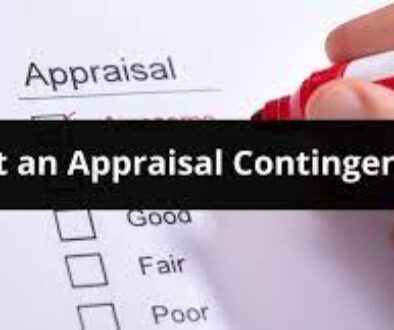Truth-in-Lending
When entering into a financial agreement, whether it be with a credit card company or a mortgage lender, it’s important to know you and your money are being protected. With so many regulations, fees and terms involved, you should feel like you fully understand your financial responsibility. This is where the TILA comes in.
Learn more about the Truth In Lending Act, its benefits and how it can protect you and your financial decisions.
What Is TILA?
The Truth in Lending Act of 1968 (TILA) is a legal mandate that requires loan lenders and credit card providers to deliver full transparency on their offerings. The TILA is essential for protecting consumers from predatory lending practices. There are many kinds of predatory practices, including unfair loan terms, high fees, hidden fees, high interest rates and more.
How Does TILA Work?
The Truth in Lending Act does exactly what its name infers – its main purpose is to protect consumers from misleading credit card and lending practices. To do so, it requires lenders and providers to disclose all necessary information, such as finance charges, for borrowers to make informed decisions surrounding loans and credit cards.
TILA applies to:
- Credit cards
- Mortgages
- Auto loans
TILA doesn’t apply to:
- Student loans
- Business loans
- Public utilities
- Home fuel budget plans
Research how your residing state applies TILA, as there are several variations on the rule .
Prohibition Of Unreasonable Penalties
Credit card providers and lenders are prohibited from imposing excessive penalty fees if a borrower is late on making payments. We recommend going to the Federal Trade Commission (FTC) websites if you have more questions on finance charges, credit reporting and requirements.
TILA Provisions
According to the Truth in Lending Act, there are several provisions that help protect potential borrowers from predatory lending and credit practices. The most important takeaway of TILA is that it requires lenders to provide digestible outlines of loan terms and fees. Additionally, credit card providers are required to provide important details about interest rates, penalties and other finance charges.
For example, a mortgage broker isn’t allowed to steer a consumer into a mortgage loan that would provide the broker with higher compensation, unless the loan is the best-case scenario for the consumer.
TILA’s provisions cover two types of credit: open-end and closed-end.
- Open-end: Open-end credit includes home equity line of credit(HELOCs), credit cards, reverse mortgages and bank-issued cards.
- Closed-end: A closed-end credit has a set amount, like home equity loans, mortgage loans and car loans.
What Is Regulation Z In The Truth In Lending Act?
Regulation Z, also known as Title I of the Consumer Credit Protection Act (CCPA), prohibits specific practices related to mortgage and loan payments. Regulation Z and TILA are often used interchangeably, so if your loan provider refers to Regulation Z, they are most likely referring to TILA regulations.
The FTC regulates TILA and Regulation Z. Lenders who wish to provide services to borrowers must disclose any information TILA requires with said borrowers before closing a loan or credit line.
With any loans under the TILA, the borrower has the right of rescission, which permits a 3-day period in which the borrower may choose to cancel or back out of a loan without penalty.
Benefits Of The Truth In Lending Act
The Truth in Lending Act provides substantial benefits for potential borrowers, including:
- Better knowledge of loan details
- Greater transparency in loan terms and fees
- Awareness of loan comparison and credit card options
- Protection against deceitful lending practices
- Capacity to avoid harsh penalties
Before TILA, some lenders would use predatory tactics to rope customers into unfair agreements. Now, with TILA, lenders are prohibited from changing the terms and conditions of an agreement once it’s been executed.
What Information Do TILA Disclosure Statements Provide?
TILA disclosure statements provide the following information about your loans and credit:
- Total of payments: Total of payments is the total amount of money you will pay once all scheduled payments are finalized. The total of payments includes both the repayment of the principal and the loan’s finance charges.
- Amount financed: The amount financed is the credit amount provided to you or on your behalf. The amount financed is also indicated as the “amount borrowed.”
- Finance charges: Finance charges are the amount the credit will cost as a dollar amount. Finance charges include the total fees and interest paid via on-time payments during the loan period.
- Borrowing costs: Borrowing costs are the credit cost at a yearly rate including any costs and fees to create the loan, also known as the annual percentage rate (APR).
Service charges and fees, interest rates and late payments are all disclosed under the TILA.
TILA FAQ
Below are commonly asked questions about the Truth in Lending Act:
Is Regulation Z the same as TILA?
While the two terms are often used interchangeably, Regulation Z refers to Title I of the Consumer Credit Protection Act (CCPA). However, don’t be alarmed if your loan provider uses the term Regulation Z instead of TILA.
What loans does the Truth In Lending Act apply to?
TILA’s provisions cover open and closed-end credit. Open-end credit includes home equity lines of credit (HELOCs), credit cards, reverse mortgages and bank-issued cards. Closed-end credit includes home equity loans, mortgage loans and car loans.
What is a TILA violation?
TILA violations can occur when the creditor fails to properly disclose the finance charges and APR, total number of payments, the payment schedule or the application of penalty fees that exceed the TILA limits.
The creditor may also be in violation if they don’t allow the borrower to cancel the contract within the rescission period. Under TILA, a creditor can be held liable for any of the above violations.
What is a Truth In Lending statement?
A Truth in Lending disclosure statement explains the fees associated with your credit. You’ll receive two Truth in Lending disclosures: the initial disclosure when you apply for a home loan and the final disclosure before you close. The statement form will include details on your mortgage loan.




